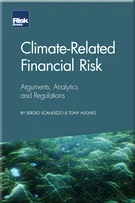Instruments for Secured Funding
Federico Galizia and Giovanni Gentili
Instruments for Secured Funding
Introduction
New Regulatory Developments for Interest Rate Risk in the Banking Book
Bank Capital and Liquidity
ALM within a Constrained Balance Sheet
Measuring and Managing Interest Rate and Basis Risk
The Modelling of Non-Maturity Deposits
Modelling Non-Maturing Deposits with Stochastic Interest Rates and Credit Spreads
Managing Interest Rate Risk for Non-Maturity Deposits
Optimising Risk and Return of Non-Maturing Products by Dynamic Replication
Hedge Accounting
Bank Runs and Liquidity Management Tools
Strategies for the Management of Reserve Assets
Optimal Funding Tenors
Instruments for Secured Funding
Funds Transfer Pricing in the New Normal
Capital Instruments under Basel III
Understanding the Price of New Lending to Households
At the time of writing, a paradigm shift was taking place for bank wholesale funding. While retail deposits continued to function very similarly to the way they did prior to the 2007–9 financial crisis, market and regulatory action were shifting banks towards secured funding. This applied to the money markets, where the traditional Libor-based unsecured lending was concentrated in overnight transactions, and repos had become the norm at longer terms;11Libor is the London Interbank Offered Rate. Repos are repurchase agreements. it also concerned medium- and long-term funding, with asset-backed securities (ABSs) and covered bond issuance crowding out senior bonds to an increasing extent. There was also a predominant reliance on central bank facilities, to the point that ABSs were being issued and “retained” by the same originators to be used for central bank refinancing.
In this chapter we take stock of the aforementioned trend, covering short-term instruments, in particular the repo, and medium- and long-term instruments, covered bonds and ABSs. In keeping with the aim of the book, these instruments are treated from the point of view of the issuer, rather than the investor. The
Copyright Infopro Digital Limited. All rights reserved.
As outlined in our terms and conditions, https://www.infopro-digital.com/terms-and-conditions/subscriptions/ (point 2.4), printing is limited to a single copy.
If you would like to purchase additional rights please email info@risk.net
Copyright Infopro Digital Limited. All rights reserved.
You may share this content using our article tools. As outlined in our terms and conditions, https://www.infopro-digital.com/terms-and-conditions/subscriptions/ (clause 2.4), an Authorised User may only make one copy of the materials for their own personal use. You must also comply with the restrictions in clause 2.5.
If you would like to purchase additional rights please email info@risk.net









